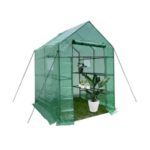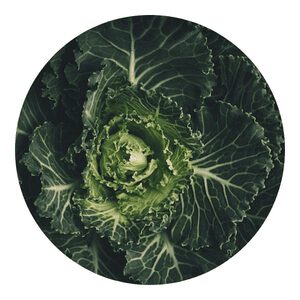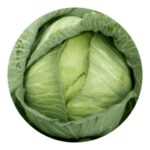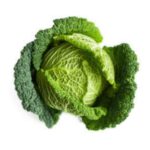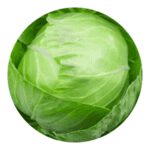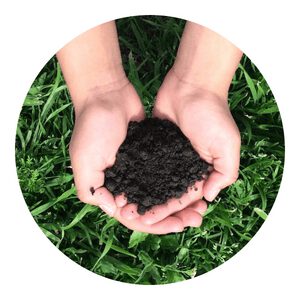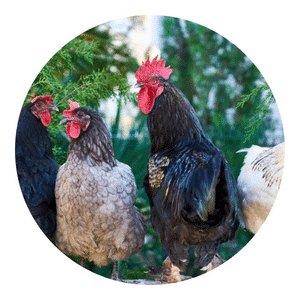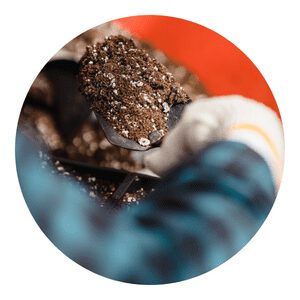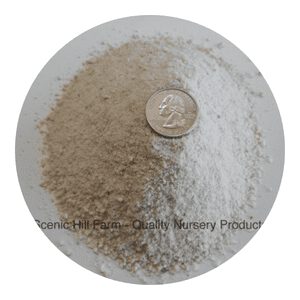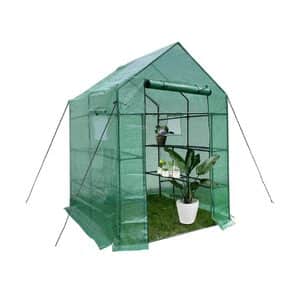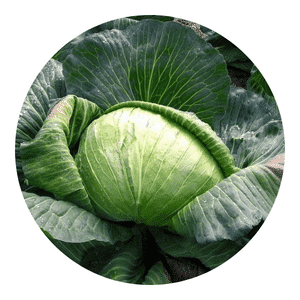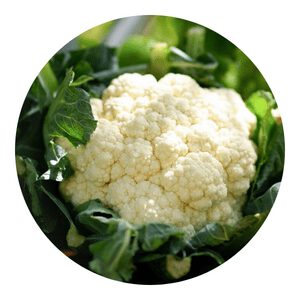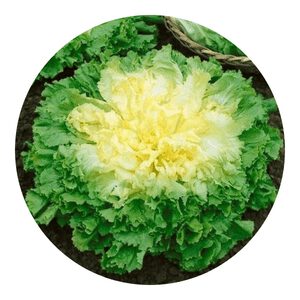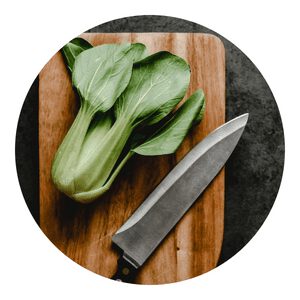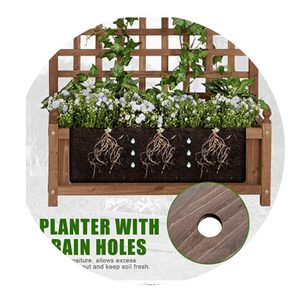How to Grow Organic Cabbage
There are many ways to grow organic cabbage, but the most common method is to plant seeds in soil and water them.
Some people also grow organic cabbage by planting it in hydroponic systems or using greenhouses.
Cabbage Menu
Planting
Cabbage can be planted in the early spring or late summer.
For best results, plant cabbage in well-drained soil in a sunny location.
Cabbage can also be grown in containers.
When planting cabbage, make sure to space plants 18 to 24 inches apart. Water regularly and fertilize with compost every two weeks.
Soil: The soil should be amended with organic matter before planting.
Fertilizer
A light application of organic fertilizer is beneficial.
Fertilizer is an important part of any garden.
A light application of organic fertilizer is beneficial, as it will help to maintain the health of your plants while also adding valuable nutrients.
Inorganic fertilizers can be harsh on plants and can also damage the soil, so it is important to use them sparingly.
Organic fertilizers, such as compost or manure, are a great choice for gardeners who want to provide their plants with the best possible care.
Water
Cabbage needs consistent moisture for best growth.
Water is essential for the growth of all plants, but cabbage requires consistent moisture for best growth.
The soil should be kept moist, but not wet, and water should be applied to the cabbage patch regularly. This will ensure a healthy head of cabbage with few insect problems.
Harvesting
Cabbage can be harvested when it is the desired size.
Cabbage can be harvested when it is the desired size. The smaller cabbages are sweeter and more tender.
Larger cabbages tend to be tougher. When harvesting cabbage, cut the stem close to the root with a sharp knife or scissors.
Cabbage Varieties
When it comes to cabbage, there are a few different varieties that you can choose from. For the most part, they all have a similar taste and texture, so it really comes down to personal preference.
Here are a few of the most popular varieties:
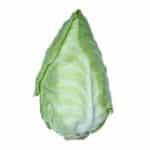
Pointed

Danish Ballhead
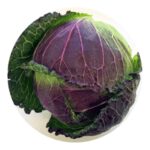
January King

Choy Sum
What is the best organic fetilizer for cabbage
Organic cabbage is a great addition to any garden, and using the best organic fertilizer will help ensure a bountiful harvest.
There are many different types of organic fertilizers available, so it is important to choose one that will be best for cabbage.
One type of organic fertilizer that is great for cabbage is compost.
Compost is made from decomposed organic matter, and it contains many nutrients that plants need to thrive. It can be added to the soil before planting, or used as a top dressing during the growing season.
Another good organic fertilizer for cabbage is manure.
Manure contains high levels of nitrogen and other nutrients that plants need for healthy growth. It should be applied to the soil before planting, and should be worked into the top few inches of soil.
Compost
Cabbage is a cool-season vegetable that does best when planted in early spring or late summer. It prefers full sun but will tolerate some shade, and rich, well-drained soil.
Cabbage is a heavy feeder and benefits from regular applications of compost fertilizer throughout the growing season.
To use compost fertilizer for cabbage, mix 1 part compost with 2 parts water and apply it to the soil around the plants every 2-3 weeks.
Be sure to keep the compost moist but not wet, as too much moisture can cause the plants to rot.
Apply the fertilizer during early morning hours or in the evening to avoid burning the leaves.
Horse manure
Horse manure is an excellent fertilizer for cabbage. It is high in nitrogen and other nutrients that cabbage needs to grow.
Here are some tips on how to use horse manure fertilizer for cabbage:
1. Horse manure should be well-rotted before using it as fertilizer. This means it should be at least six months old.
2. Spread the horse manure around the base of the cabbage plants, being careful not to get any on the leaves.
3. Water the area well after applying the fertilizer.
Cow manure
If you’re looking for an organic way to fertilize your cabbage, look no further than cow manure.
Cow manure is high in nitrogen and phosphorus, two nutrients that are essential for healthy cabbage growth.
Here’s how to use cow manure fertilizer for cabbage:
1. Spread a layer of cow manure over the soil where you’ll be planting your cabbage.
2. Incorporate the cow manure into the soil by tilling or digging it in.
3. Water the area well so that the manure can start to break down and release its nutrients into the soil.
4. Plant your cabbage seedlings or transplants and water them regularly.
5. As your cabbage grows, keep an eye on its leaves and if they start to turn yellow, that’s a sign that it’s time to fertilize again with cow manure.
Sheep manure
Sheep manure is an excellent fertilizer for cabbage. It is high in nitrogen and other nutrients that cabbage needs to grow well.
To use sheep manure fertilizer, simply spread it around the base of the cabbage plants.
Be sure to wear gloves when handling manure, as it can be quite smelly!
Rabbit manure
If you’re looking for an organic way to fertilize your cabbage, rabbit manure is a great option.
Here’s how to use it:
1. Collect the manure from your rabbits’ hutch. If you don’t have pet rabbits, you can usually purchase rabbit manure from a local farmer or nursery.
2. Spread the manure around the base of the cabbage plants, being careful not to get any on the leaves.
3. Water the area well so that the fertilizer can start working its way into the soil.
Rabbit manure is high in nitrogen and other nutrients that will help your cabbage thrive.
Used properly, it’s a safe and effective way to give your plants a boost.
Donkey manure
Donkey manure is an excellent fertilizer for cabbage.
Here are a few tips on how to use it:
1. Donkey manure should be fresh – if it’s too old, it won’t be as effective.
2. Apply the manure to the soil around the cabbage plants, being careful not to get any on the leaves.
3. Water the area well after applying the manure, to help it break down and work its way into the soil.
Goat manure
Goat manure is an excellent fertilizer for cabbage. It is high in nitrogen, phosphorus, and potassium, which are all essential nutrients for cabbage growth.
Apply goat manure to the cabbage bed before planting, and then side-dress the plants every few weeks during the growing season.
Be sure to compost the manure before using it, as fresh manure can burn plants.
Green manure
Green manure fertilizer is a type of organic fertilizer made from green plants. It is used to improve the fertility of the soil and to add organic matter to the soil.
Green manure fertilizer can be made from any type of green plant, but it is usually made from legume plants such as alfalfa or clover.
To use green manure fertilizer for cabbage, sow the seeds of the green manure crop in early spring, before you sow the seeds of the cabbage crop.
The green manure crop should be well established before the cabbage crop is planted.
When you are ready to plant the cabbage crop, turn under the green manure crop and incorporate it into the top few inches of soil.
This will provide a boost of nutrients and organic matter to the soil that will benefit the cabbage plants.
Chicken manure
Chicken manure fertilizer is an excellent way to provide nutrients for cabbage plants.
The high nitrogen and phosphorus content in chicken manure helps to promote vegetative growth, while the potassium aids in flowering and fruiting.
To use chicken manure as a fertilizer, it is best to compost it first. This will reduce the chance of burning the plants with the high levels of nitrogen.
To compost chicken manure, spread it out in a thin layer and mix it with other organic matter, such as leaves or grass clippings. Turn the pile regularly to aerate it and keep it from getting too hot. After several weeks, the chicken manure should be fully composted and ready to use on the cabbage plants.
Apply a thin layer of compost around the base of each cabbage plant, taking care not to touch the leaves. Water well after applying fertilizer.
Blood meal
Blood meal fertilizer is an excellent option for cabbage, as it’s rich in nitrogen and other minerals.
To use blood meal fertilizer, mix it with water at a ratio of 1:4. For example, if you’re using 1 cup of blood meal, mix it with 4 cups of water.
Apply the mixture to the soil around your cabbage plants, being careful not to get any on the leaves.
Blood meal fertilizer should be applied every two weeks during the growing season.
Bone meal
When planting cabbage, it’s important to use a fertilizer that will give the plants the nutrients they need to grow strong and healthy.
Bone meal is an excellent fertilizer for cabbage (and other plants), providing them with phosphorus and calcium that they need for proper growth.
To use bone meal fertilizer for cabbage, simply mix it into the soil before planting. You can also top dress the plants by scattering the bone meal on the surface of the soil around the base of the plants.
Be sure to water the bone meal in well so that it can start working its magic!
Best Way to Grow Cabbage
The relative coolness of spring and fall is ideal for growing cabbage, but it will also suffer if temperatures reach 80 degrees each day. In high summer, a few hours of afternoon shade is recommended.
Because cabbage is a heavy feeder, it is essential to fertilize the soil regularly with compost.
After transplanting, apply well-rotted manure to the plant’s root zone to improve soil nutrition. Fertilizing young seedlings is also an option, but you must wait a couple of weeks to apply fertilizer.
In order to maximize yield and prevent diseases, cabbage should be grown in a well-drained garden spot. The soil should be friable and well-drained. Before planting, use compost and fertilizer to enrich the soil.
If planting in rows, space them about 15 to 23 inches apart. Even though seedlings are tiny, they will quickly grow into leafy masses throughout the season.
It is advisable to keep the soil around the cabbage patch moist but not so wet that it dries.
Once seedlings have rooted, transplant them to a sunny area. The seedlings should be spaced 18 inches apart.
If they are too close, they compete with each other for sunlight. This means that they will be smaller than their potential.
The best way to grow cabbage is to keep the soil moist, but don’t overwater it. In general, they need one to 1.5 inches of water a week.
Is Cabbage Easy to Grow?
Cabbage is one of the easiest vegetables to grow. Plant it in a sunny spot at least 6 weeks before the first frost. It can tolerate cold weather and grows hardier and sweeter when cooked.
Once the leaves are established, cabbage requires six to eight hours of full sunlight a day. Water daily in the morning and wait until the top two inches of soil dry. During the winter, transplant your plants into an unheated greenhouse.
For optimal growth, cabbage requires full sun and six to eight hours of direct sunlight. It grows well in cool temperatures, and you need to water it regularly during the day. Its growing season is long and cool. It can tolerate temperatures as low as 20degF, but it bolts at temperatures above 80degF. To avoid this, sow the seeds indoors, 4 to 6 weeks before the last frost.
After planting, make sure you water your plants regularly. The plant needs an even moisture level and a fine mulch to keep it cool. It needs about an inch of water a week, so make sure you check the soil and fertilize accordingly.
The soil pH should be between 6.5 and 6.8 to discourage the formation of clubroot. A little bit of fish emulsion is also a good fertilizer to add to your soil.
What Month Do You Plant Cabbage In?
What month do you plant cabbage in? When to start planting your spring and fall crop, you need to make sure the soil is rich and has plenty of moisture. You should begin planting seeds eight to 10 weeks before the last anticipated frost.
Transplant plants when they reach about three to four inches. Space the plants twelve to twenty-four inches apart. The closer they are to one another, the smaller their heads will be. Mulch the soil well before planting with a 3-inch layer of straw.
If you’re planting spring or summer cabbage seedlings, space them 18 inches apart. For fall and winter plants, space them 2 feet apart. When transplanting seedlings, be sure to lift them carefully by wrapping soil around their roots.
This prevents root disturbance and helps them adapt to their new location. Ideally, cabbages should be transplanted in a sunny location where they will receive plenty of sunlight.
If you’re starting a spring or fall cabbage crop, plant them four to six weeks before the first frost. To avoid the risk of damaging the newly transplanted plant, wrap them in black plastic to protect them from frost. You can also add slow-release plant food to the soil.
After transplanting, cover the plants with three inches of mulch. It will help retain moisture and keep weeds from choking on the roots. Once the head has reached a firm texture, you’re ready to harvest.
Does Cabbage Need Full Sun?
A good question to ask is, “Does cabbage need full sun?” The answer is “no.”
While this is a very common question among vegetable gardeners, you should also consider its specific needs.
For example, cabbage requires at least 6 hours of full sunlight per day, but you can increase that number.
What Should Not Be Planted Near Cabbage?
In the vegetable garden, some companion plants do not do well with cabbage.
These plants include onions, hyssop, and garlic. They can be grown next to radishes, lettuce, and radish, but they are not good choices for planting near cabbage.
Another option is invasive mint, which can act as mulch around other Brassicas. Both of these companions attract bees.
Additionally, they repel the larvae of the cabbage moth and butterfly.
In addition to being delicious to eat, tomatoes, celery, and beans are also not good companions for cabbage.
These two plants can attract aphids and Japanese beetles, which attack cabbage. They also increase the chances of blight, so they are not the best choice for companion planting.
However, some plants do benefit from the nitrogen provided by cabbage. Soybeans, radishes, and thyme are good companions for cabbage.
Does Cabbage Regrow After Cutting?
Does cabbage regrow after cutting?
This perennial vegetable can be cut back to the ground when it is too large or too old.
This will not only stop it from growing, but it will also encourage it to produce more side branches.
Besides, snipping off the growing tip will prevent it from bolting, as it causes the plant to produce more buds lower down.
In addition, snipping off the head will encourage the cabbage plant to grow in the next few weeks.
How to grow hydroponic cabbage?
Cabbage is a hearty vegetable that can be grown hydroponically with relative ease.
Here are a few tips on how to successfully grow hydroponic cabbage.
Start with high-quality seeds or transplants and make sure they are well-suited for growing in your particular climate.
Cabbage thrives in cool weather so if you live in a warmer climate, choose a variety that is known to be heat tolerant.
Give your plants plenty of room to grow.
Cabbage heads can get quite large, so make sure to give them adequate space in your grow bed or system. If you’re growing in soil, transplant seedlings into larger pots as they grow.
Make sure to keep an eye on your plants and monitor for pests or disease.
How long does it take for cabbage to grow hydroponically?
Hydroponic cabbage can be grown year-round in a controlled environment. The average time from seed to harvest is 60-70 days.
Cabbage is a cool weather crop, and does best when temperatures are between 60-70°F. If the temperature gets too high, the cabbage will bolt (send up a flowering stalk) and go to seed. Once the cabbage bolts, it becomes bitter and unusable.
To avoid this, make sure to keep an eye on the temperature of your grow room or greenhouse. In general, you’ll want to keep things on the cooler side rather than the warmer side.
How to grow cabbage in a greenhouse
Organic cabbage can be grown in a greenhouse with some effort. Follow these steps and you will have success.
To start, you will need to purchase organic cabbage seeds. You can find these at most gardening stores or online.
Once you have your seeds, sow them in trays of moistened potting mix or seed-starting mix.
Be sure to plant the seeds ½ inch deep and keep the soil moist but not wet. Place the trays in a warm location with indirect sunlight and wait for the seeds to germinate, which usually takes about 10 days.
Once the seedlings have emerged, thin them out so that only the strongest plants remain.
Transplant them into individual pots filled with organic potting mix when they are about 4 weeks old.
Can you grow cabbage in a greenhouse in summer?
You can grow cabbage in a greenhouse in summer, but you need to take some precautions. The main problem is that it will be too hot for the cabbage.
You need to make sure that the greenhouse doesn’t get too hot, or the cabbage will wilt and die.
One way to do this is to ventilate the greenhouse during the hottest part of the day. Another way is to plant the cabbage in a shady spot.
If you do decide to grow cabbage in a greenhouse in summer, there are a few things you need to keep in mind.
First of all, you’ll need to water it more frequently than usual. The soil should be kept moist but not soggy.
Secondly, you’ll need to fertilize more often than usual. An organic fertilizer like compost or manure will work well.
Finally, you’ll need to watch out for pests and diseases.
Grow Your Own Cabbage
With organic cabbage seeds, you can grow your own cabbage that is free of harmful chemicals.
These seeds are easy to grow and yield a bountiful crop.
Organic Cabbage Seeds online
Are you looking for an easy way to grow your own organic cabbage?
If so, “Click to Grow” online shop has the perfect solution for you!
Our online shop offers a wide selection of high-quality organic cabbage seeds that can help you get started on your gardening journey.
With our simple and secure checkout process, buying organic cabbage seeds has never been easier.
In conclusion, growing organic cabbage is easy and fun!
With a little planning and care, you can enjoy fresh, healthy cabbage all season long.
If you have any questions or need more tips, be sure to ask in the comments below.
Organic Cabbage FAQ
Cabbage is a leafy vegetable that comes in many different varieties. Some of the most popular types of cabbage to grow organically include:
Savoy Cabbage: This type of cabbage has wrinkled, dark green leaves and a mild flavor. It is often used in salads and slaws.
Red Cabbage: As the name suggests, red cabbage has deep red leaves. It is slightly sweeter than other types of cabbage and is often used in coleslaw or as a garnish.
Bok Choy: Bok choy is a type of Chinese cabbage with white stalks and dark green leaves. It has a mild flavor and is often used in stir-fries or soups.
If you want to grow organic cabbage, it’s important to start with organic seeds. But how can you be sure your seeds are organic? Here are a few things to look for:
1. Check the packaging. If it says “organic” on the label, that’s a good sign.
2. See if the seeds have been certified by a reputable organization like the USDA National Organic Program.
3. Ask your seed supplier if they use any synthetic chemicals or pesticides on their crops. If they do, those chemicals may end up on your seeds as well.
With a little research, you can be confident that you’re getting organic cabbage seeds and giving your plants the best chance to thrive.
Organic cabbage seeds have many benefits that make them a great choice for those looking to grow their own cabbages.
One benefit is that they are not treated with chemicals or pesticides, which can be harmful to both the environment and your health.
Another benefit is that organic seeds are often more disease-resistant than non-organic seeds, meaning you’ll have a better chance of success when growing your cabbage crop.
Finally, organic cabbage seeds tend to be more flavorful than their non-organic counterparts, so you can enjoy a tastier crop of cabbages!
Organic cabbage seeds are available from many different sources.
How can you choose the best organic cabbage seeds for your garden?
There are a few things to consider when choosing organic cabbage seeds.
One is the source of the seeds. If you know someone who has a garden and grows their own cabbage, ask for seeds from them.
This is a good way to get organic seeds that are well-suited to your local area.
Another thing to consider is the type of cabbage you want to grow.
There are many different types of cabbages, such as green, red, and Savoy cabbages.
Finally, make sure to read the seed packet carefully before you purchase it.
Organic cabbage takes about 60 days to mature.
However, it can take up to 80 days in cooler weather.
Cabbage is a cool weather crop and does best when planted in the spring or fall.
It can tolerate some frost, so it is often one of the last crops to be harvested in the fall.
Starting cabbage from seed is a thrifty way to get plants, and it’s also fun to watch the little seedlings grow.
You can start cabbage in pots or in the ground, but if you start them in pots, be sure to harden them off before transplanting them into your garden.
To grow cabbage from seed, first, find an organic cabbage seed that suits your needs.
Then, sow the seeds ¼ inch deep in potting soil or a seed-starting mix.
Be sure to keep the soil moist but not wet and place the pots in a sunny location.
Once the seeds have germinated and grown into seedlings, thin them so that only the strongest plants are left.
Click To Grow
Helps Us Grow – Share If You Like



